Nine Innings: Solving the Yankees' Sonny Gray Problem, AL East Deciding Factors and Our Favorite Statcast Quirks

THE YANKEES HAVE A SONNY GRAY PROBLEM, AND IT MAY SPELL THE DIFFERENCE BETWEEN DIVISION TITLE OR ONE-GAME PLAYOFF
By Tom Verducci
First the Yankees took away Gary Sanchez from catching Sonny Gray.
Then they had Gray speed up his delivery, which had become excruciatingly slow.
Then they told Gray, a classic over-thinker, to stop calling his own game—to simply follow the lead of his personal catcher, Austin Romine, except for perhaps two or three pitches a game.
Then they had him throw a career-high rate of breaking balls.
Then they took away his changeup, against which hitters are crushing for a .539 batting average.
And still, after all that, Gray is broken—has been for years, actually.
What do they do now? Gray has about four more starts before the trade deadline; realistically, two or three before trade discussions intensify. Can the Yankees still afford to hope that he can be fixed before then? And if he does manage an effective start of two, do they throw full confidence behind him?
New York’s need to trade for a starting pitcher grew more urgent Saturday because of how poorly Gray threw the baseball against Boston after all the attempts to fix him. Gray gave up six runs without getting out of the third inning. His breaking balls had little bite. His fastball began losing zip quickly. Twenty times he threw a pitch with two strikes and 20 times he failed to get strike three.
Until he became a Yankee, Gray had never failed to get a strikeout in any start. Now he has done it three times in his past 24 starts.
To his credit, Gray stood accountable and embarrassed after the game when discussing his performance. But the Yankees can no longer trust him to pitch against Boston or at home—daggers in a season in which one game could mean the difference between winning the division and putting the entire season on the line in a wild card game.
Gray arrived in New York last trade deadline in a deal in which the Yankees sent three prospects to Oakland. Since then, Gray has a 7.10 ERA at home as a Yankee. He is the worst pitcher in pinstripes (by home ERA with at least a dozen starts) since the franchise began wearing the iconic uniform design a hundred three years ago. Yes, worse than Carl Pavano. Yes, worse than Ed Whitson.
Midseason Report Card: Red Sox, Yankees Continue to Control the AL East
Whitson is the preeminent example of when a player can’t pitch in New York. In 1985-86, life in the Bronx was so bad for Whitson that his agent, Tom Reich, said, “The guy is in a living nightmare. We have a player here who literally dreads going to his own stadium. He’s been living on that edge. Before his first start, he felt great throwing in the bullpen, and when he got out on that mound, it was like being in Vietnam.”
Vietnam?
Whitson wasn’t quite buying the analogy, explaining, “This is baseball. It’s not like looking for Qaddafi.”
Truth was, Whitson was anxious and fearful. Whitson was booed entering and leaving the ballpark—even on days he didn’t pitch. One time he found three-inch carpenter nails behind all four of his car’s tires when it was parked in the driveway of his house. Another time his driveway was littered with tacks. He installed an expensive alarm system in his house. He flew his family out of the area when the Yankees were on the road. In 1986 manager Lou Piniella decided the Yankees would no longer start him at Yankee Stadium.
How bad was Whitson at home? His ERA in 19 games there was 4.98—which would be a big improvement for Gray.
On the night before Gray started against Boston, and with his one-year anniversary with the Yankees coming up, I asked Gray if he were beginning to get comfortable in his home ballpark. His hesitation to answer spoke volumes. He thought for a minute and said, “It’s getting there. As a pitcher you always want to be comfortable in your home surroundings. It’s still a work in progress.”
Know this about Gray: his problems in New York are not for a lack of toughness. His father was killed in an early morning auto accident in 2004. That night Gray insisted on playing in his high school football game. He threw four touchdown passes.
In Game 2 of the 2013 ALDS, Gray threw eight shutout innings with nine strikeouts in a pitcher’s duel with Justin Verlander. Gray was a 23-year-old rookie. Only four pitchers in postseason history ever pitched shutout ball with so many strikeouts at a younger age.
He is a 5-foot-10 righthander—the kind of pitcher that doesn’t last, if they make it at all. In the past half century, he has started more games than any righthander that small except for only five (Steve Stone, Mike Leake, Tom Gordon, Bill Stoneman and Ricky Bones.)
Gray’s problem is that his stuff simply isn’t very good to get hitters out two and three times, and hasn’t been for years. Since 2016 his ERA is 4.67. One hundred pitchers have thrown 300 innings since 2016. Gray ranks 82nd among those 100 pitchers in ERA.
Hitters have crushed his four-seam fastball this year (.357), forcing him into the shell of being a breaking ball pitcher. And while his slider and curveball generally are tough to hit (.214), he throws them in the zone only 39% of the time, leading to long counts and long innings.
The Yankees are loaded with minor league position players as trade chips to package for a starter. The problem will be finding an impact starter, especially since the Mets aren’t handing them Jacob deGrom or Noah Syndergaard, and Cole Hamels, Chris Archer and Michael Fulmer might be the next Sonny Gray. Their best option may be J.A. Happ, who has a four-seam fastball that is the toughest to hit among starters (.183) other than Gerrit Cole (.156) and Chris Sale (also .183).
The Yankees thought they were getting somewhere with Gray. He began June with four starts in which he had a 2.63 ERA and cut his walk rate. He then stumbled a bit against Tampa Bay, losing 4-0 but grinding out 6 2/3 innings. And then Saturday against Boston happened.
It was one start, and you don’t overreact to one start. But this was one start by someone who has started 13 times at home and has an ERA north of seven. It was one start by a guy with a 4.67 ERA over his past 65 starts. Concern crossed over to worry for the Yankees when it comes to Sonny Gray. How they proceed with him and the trade market may just decide whether they win their division or fall into a one-and-done game.
THREE FACTORS THAT WILL DECIDE THE YANKEES-RED SOX RACE
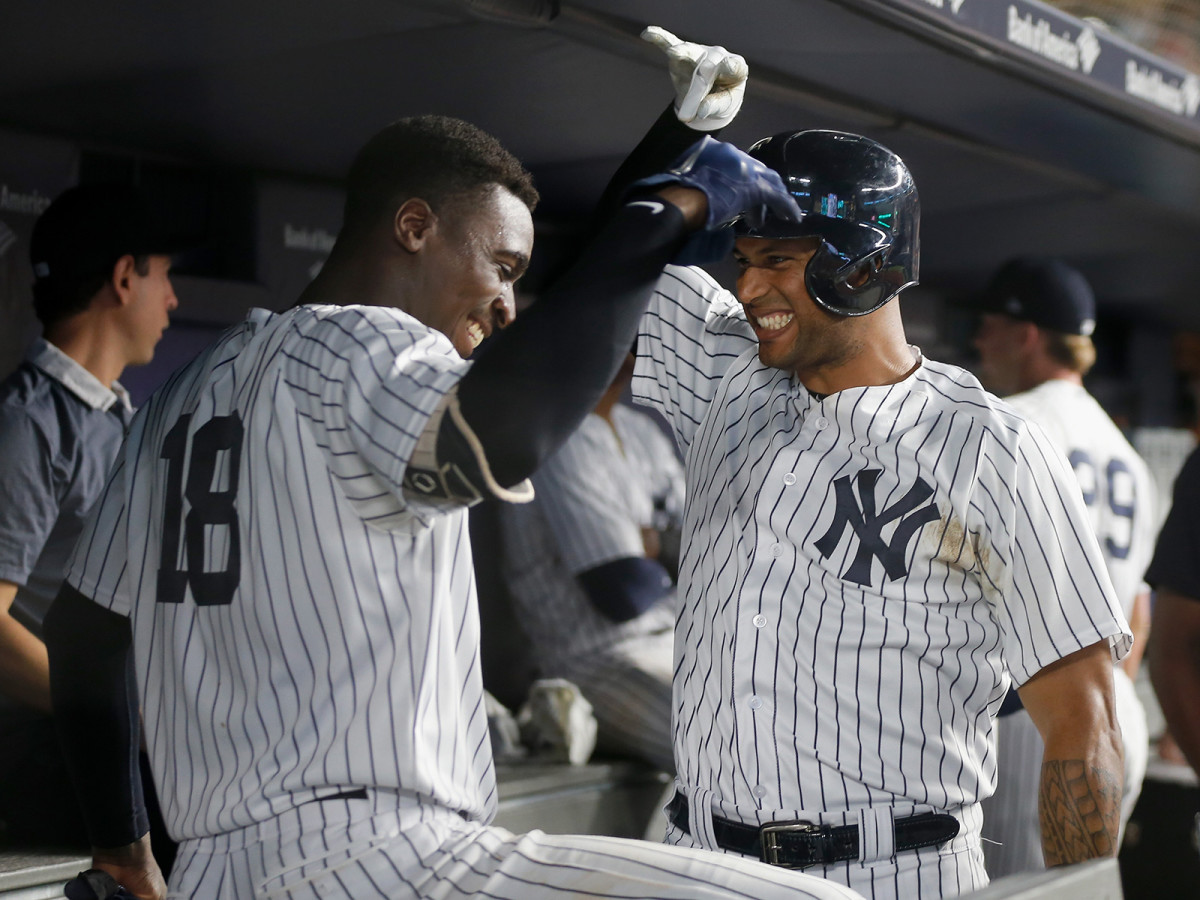
By Jon Tayler
Halfway through the season, the AL East is a dead heat. After taking two of three in the Bronx this weekend, the Yankees are in a virtual tie with the Red Sox atop their shared division. With ten head-to-head matchups left, the East crown is likely to come down to the wire—and the difference between a trip to the Division Series and second-place terror of the wild-card game could be just as narrow.
So far, both New York and Boston have looked equal in their matchups—the Yankees hold the season edge, 5–4—and in the stats. Both of their lineups are loaded, both rotations are strong, and both bullpens are full of weapons. So which pieces and players could be the biggest factors in the race for first?
1. The back of each rotation
Neither team has concerns about their respective aces (Chris Sale and Luis Severino), and each rolls out after that an above-average if inconsistent No. 2 (David Price and, once back from injury, Masahiro Tanaka) and a reliable veteran (Rick Porcello and CC Sabathia) at No. 3. Where things get hairy for each is in those final two spots.
For Boston, young lefty Eduardo Rodriguez has been mostly solid, though New York tagged him for five runs on Friday night. Still, a 107 ERA+ and a 9.7 strikeout-per-nine rate is plenty good from a fourth starter. More concerning is the No. 5 spot, currently occupied by soft-tossing lefty Brian Johnson because of injuries to Drew Pomeranz and Stephen Wright. Johnson may be back soon, but he’s a big question mark after missing the start of the year with arm problems and pitching dreadfully when called upon, posting a 6.81 ERA and walking 21 batters in 37 innings.
Things are equally unsettled with the Yankees. Sonny Gray spent his Saturday night getting blasted to pieces by Boston. Behind him is rookie Domingo German, who has swing-and-miss stuff (10.5 whiffs per nine) but hasn’t translated that into reliable results (a 5.32 ERA and 11 homers given up in 64 1/3 frames).
Neither team has any real depth beyond what’s currently in the big leagues. The Yankees are better suited to acquiring outside help thanks to their deep pockets and bountiful farm system, while Boston is mostly tapped out financially and prospect-wise. Both of Pomeranz and Gray have the talent to be better; whichever gets their first may be one of the biggest keys for the rest of the season for each squad.
Shohei Ohtani, the DH, Leads This Week's Fantasy Baseball Waiver Wire
2. Boston’s late relief
Closer Craig Kimbrel is having a strong year for the Sox, but the relievers in front of him are a less reliable bunch. Joe Kelly has seemingly harnessed his great stuff in relief, but he stumbled in June, with an 8.31 ERA and seven walks in 8 2/3 innings, and his control is shakier than an old washing machine. Ditto Matt Barnes, a righty with power stuff (48 strikeouts in 34 2/3 innings) but who frequently loses the strike zone (18 walks). Beyond them is a cast of mostly interchangeable middle relief pieces..
A lot, in other words, rides on Kelly and Barnes not slipping. That duo could get a boost with the possible arrival of Tyler Thornburg, a one-time shutdown reliever in Milwaukee who hasn’t thrown a single pitch in a Red Sox uniform due to arm troubles since being acquired before the 2017 season. If he’s healthy, he could give Boston another weapon. But if Thornburg can’t get right, the Red Sox will likely have to consider bolstering that relief corps.
3. Gary Sanchez
It’s crazy to think that the Yankees’ lineup has been a world-destroying force despite Sanchez hitting like a flu-ridden Willie Bloomquist. Everyone in New York is laughing and riding and cornholing except Gary, who’s slashed a meager .190/.291/.433 and is currently laid up on the disabled list due to a groin strain.
That time off may prove beneficial to Sanchez, who has apparently been battling several minor injuries throughout the season. He could also use some better luck: Despite a hard-hit rate and exit velocity as good or better than last year’s marks, his batting average on balls in play is a putrid .194. All of that suggests that better things are in the offing for Sanchez if he comes back healthy.
As it stands, Boston leads New York in runs per game, batting average, on-base percentage and slugging percentage, while the Yankees are tops in home runs; both are tied in team OPS+. A productive Sanchez, then, could push that Yankees lineup over the top. And if Giancarlo Stanton has another second-half surge in him like he did last year, then abandon all hope, ye pitchers who enter Yankee Stadium.
BEST MOST FASCINATING THING I SAW THIS WEEK: THE MARINERS TURNED BACK THE CLOCK FOR TURN AHEAD THE CLOCK NIGHT
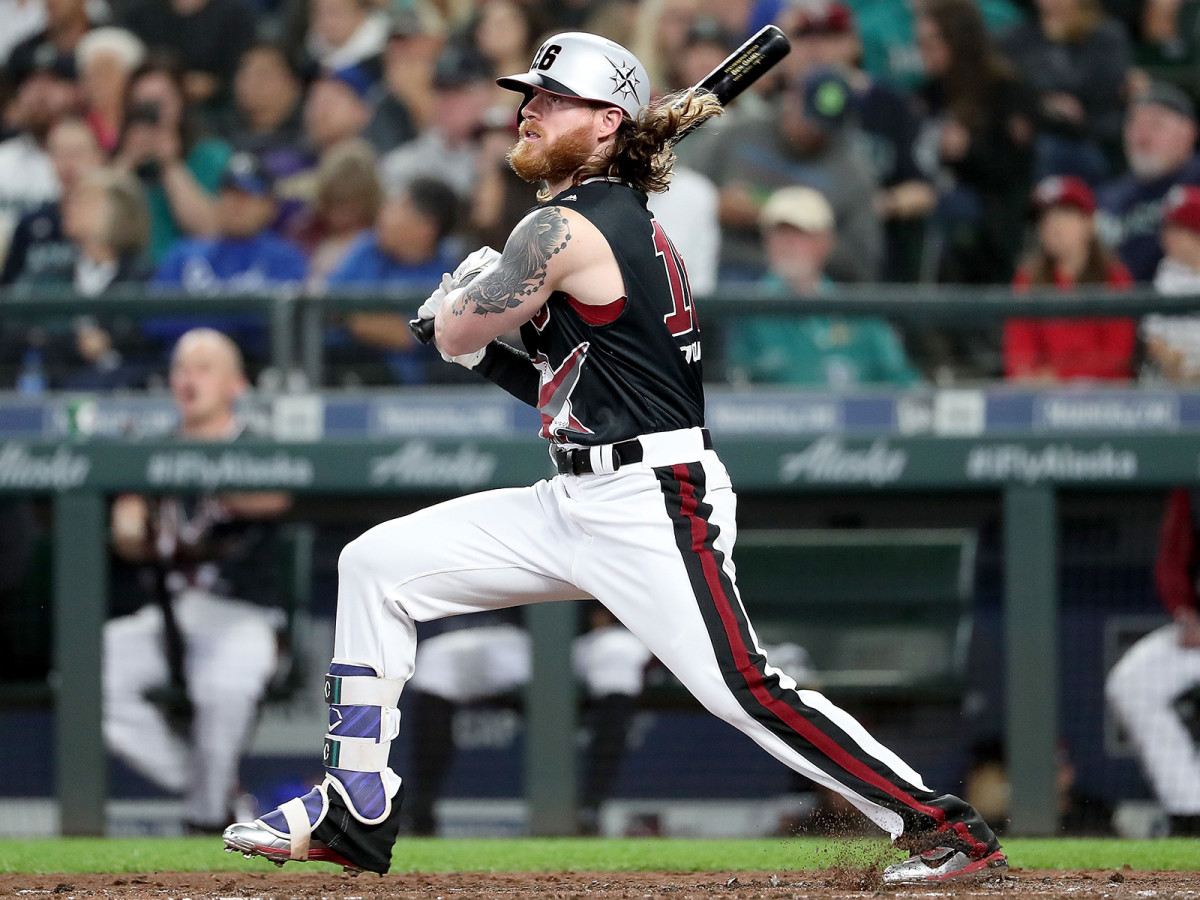
By Gabriel Baumgaertner
I hope I’m not violating the spirit of the section by saying that the Mariners’ “Turn Ahead the Clock” uniforms weren’t necessarily my favorite thing this week (that distinction goes to Yasiel Puig’s latest entry into his Wild Horse compendium), but the bizarro uniforms were certainly the most fascinating.
For those seeking a frame of reference, Seattle was the team that originated the original “Turn Ahead the Clock” promotion in 1998. The idea was to envision what baseball uniforms would look like in 2027, which meant backward caps, untucked backs and, uh, no shirtsleeves? The game was a big enough hit that a few other teams joined the promotion and, in turn, produced some garish contributions into this amusing, if totally odd moment in baseball history.
The Mariners turned back the clock to Turn Ahead the Clock night on Saturday, reintroducing those black and red uniforms of 20 years prior along with a DeLorean (unclear why that’s still so central to the future of human existence) and “Hyperdrive Hank,” who looks like Buzz Lightyear with a facelift.
Dee Gordon has the most swag in the MLB, and it isn't even close. pic.twitter.com/4nK8R2dMOJ
— MLB Laughs (@mlb_laughs) July 1, 2018
Why were these uniforms fun? Dee Gordon took the opportunity to wear his hat backward and let his chain out. Nelson Cruz unveiled his arms, which might be made of titanium. Ben Gamel looked like someone kicked out of multiple Georgia softball leagues for disorderly behavior.
The logo may be ugly, but the promotion is one that MLB, typically loath to embrace anything too progressive, should consider expanding.
ROUNDTABLE: WHAT TRADE WOULD BEST ADDRESS THE NEEDS OF A CONTENDER?
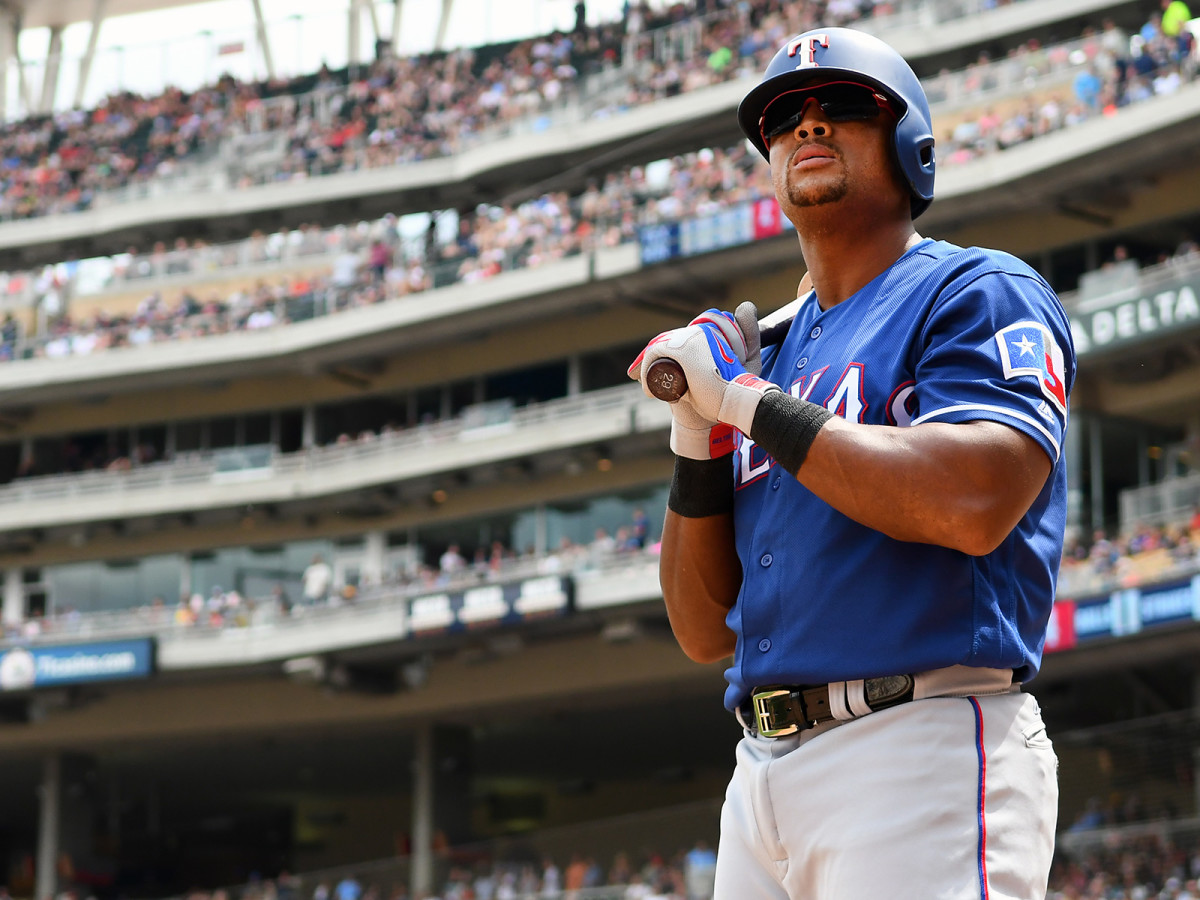
Editor's note: Our contributors were asked to refrain from choosing the oft-discussed Manny Machado, Noah Syndergaard and Jacob deGrom. All three players would mightily improve almost any team's roster.
Emma Baccellieri: The Indians acquire Padres reliever Kirby Yates.Andrew Miller may be making his return from the disabled list soon, but the Indians’ bullpen is still a crucial area of need. With a 5.24 ERA and 4.67 FIP, their relief corps is spared the indignity of being the American League’s worst only by Kansas City, which isn’t saying much. There are several strong candidates for Cleveland to chase, but a particular one that makes sense is Yates.
The 31-year-old has made huge strides in the last two seasons, and he’s been startlingly good over the past few months. His 0.79 ERA is the best in baseball, backed up by strong peripheral numbers and a low home run rate. (He’s given up just one dinger in 34 innings this season.) And Cleveland’s front office has actually shown interest in him before—they picked up the reliever in November 2015, only to let him go before the start of spring training. But Yates has made significant strides since then, and San Diego should be trying to shop him around. The Padres aren’t trying to contend this year, with a bullpen deep in decently attractive long-term options, so there’s no reason for them to hang on here. Yates is perfect deadline bait for them to cast, and Cleveland should be looking to bite.
Gabriel Baumgaertner: San Diego’s Brad Hand and/or Miami’s Kyle Barraclough to the Mariners. Seattle has one of the game’s best closers in Edwin Diaz, so it’s time they create the perfect bridge to make teams feel like they don’t have a chance if they are trailing the Mariners once the game reaches the sixth inning. The M’s should also look for another starting pitcher (or two), but the only way they’ll be able to keep pace with the Astros, Yankees and Red Sox is if they keep scores low and win the battle of the bullpens.
Midseason Report Card: The NL Central Is Baseball's Most Exciting Division
Michael Beller: J.A. Happ to the Brewers. He's going to be traded. He’s making $13 million this season, about half of which has already been paid. He’s a free agent after this season. And, of course, he’s having a good year, producing a 3.62 ERA, 3.58 FIP, 1.06 WHIP and 106 strikeouts in 97 innings. So which potential trade partner is the best fit? The Yankees and Cubs will likely be in on Happ, but Milwaukee should make the best offer to the Blue Jays. Assuming they can’t pry loose one of the Mets' aces, Happ would be a great addition to a Brewers rotation that ranks 13th in ERA, 19th in FIP, 17th in pitcher fWAR, and still isn’t sure when it will get back Jimmy Nelson. After just missing out on the postseason last year, the Brewers should be motivated to push in their chips this year. Happ would represent a major win for the current NL Central leaders.
Connor Grossman: Adrián Beltré lands on any contender. As the sun sets on his brilliant career, the Rangers should do right by Beltré and give him a shot to win a ring in what could be his last year. He already told Evan Grant of the Dallas Morning News that if he returns in 2019, he only wants to play for Texas. Perhaps he'd decide to hang 'em up if he can get that World Series title that painfully eluded him in 2011. There are a few roadblocks standing in the way of a potential deal, starting with Beltré's right to veto any deal and alternatives like Manny Machado and Mike Moustakas on the market. Regardless, here's to hoping that the future Hall of Famer gets one more go at October baseball.
A Brief Oral History of SI's Most (Un)Godly Cover: The Mark McGwire-Sammy Sosa Toga Shoot
Jon Tayler: Wilson Ramos to the Nationals. Sinking like a stone in the NL East, Washington is amid a brutal stretch that’s seen the team go 9–17 since the start of June and, after losing two of three to Philadelphia this weekend, fall six back of Atlanta in the division. The Nats have problems up and down the roster, but nowhere bigger than at catcher, where Pedro Severino and Spencer Kieboom have been among the league’s worst producers at the position. The easy solution: reuniting with former backstop Wilson Ramos, currently with Tampa Bay. He’s a rough play defensively, but his offense (.291/.338/.461 and a 123 OPS+ in 272 plate appearances) and familiarity with the pitching staff would be a big boost to a team that needs it. And since he’ll be a free agent at season’s end, the Rays are likely to move him for whatever prospects they can get rather than lose him for nothing this winter.
Tom Verducci: The Yankees get J.A. Happ. Okay, he’s not Jacob deGrom, but Happ has been one of the most underrated reliable starters in baseball. Over his past 84 starts he is 47-20, and this year only Gerrit Cole has a tougher four-seam fastball to hit among starters than Happ.
He just finished a 3-0, 3.16 June, he’s durable and he’s lefthanded. He’s 4-1 with a 3.94 ERA in his career at Yankee Stadium and he pitches well against the Red Sox (7-3, 3.09) and Astros (5-2, 3.46). It’s a low-risk buy that makes sense for New York.
OUR FIVE FAVORITE STATCAST TIDBITS OF THE FIRST HALF
By Michael Beller
Since Statcast’s introduction in 2015, it has given baseball junkies a motherlode of stats over which to obsess. Some are predictive, and some are descriptive. Some of them are useful, while others are less so. Some, meanwhile, are just fun and quirky. Here are the five greatest Statcast quirks thus far in the 2018 season.
1. Statcast measures a stat it calls barrels, which quantifies how often a hitter squares up a pitch. Last year, three hitters averaged at least 11 barrels per plate appearance, and the trio isn’t exactly surprising: Aaron Judge, J.D. Martinez and Giancarlo Stanton. This year, five hitters are averaging at least 11 barrels per plate appearance. Martinez is back there, as is his teammate Mookie Betts. The other three, however, range from “Sure, I could see that,” to, “Where did he come from?” Their identities: Joey Gallo, Teoscar Hernandez and Max Muncy.
2. Every baseball fan is now familiar with the term exit velocity, which measures how hard a ball is hit. The hardest hit ball in the Statcast database belongs to David Freese, who belted one at 123.4 mph in 2016. Gary Sanchez has the hardest hit ball of this season, at 121.1 mph. That’s not the quirk, however. Among players with at least 100 batted ball events, Dee Gordon has the lowest top exit velocity, at 100.3 mph. That’s the second-lowest top exit velocity ever, and would be Gordon’s second time trailing in this category in four years.
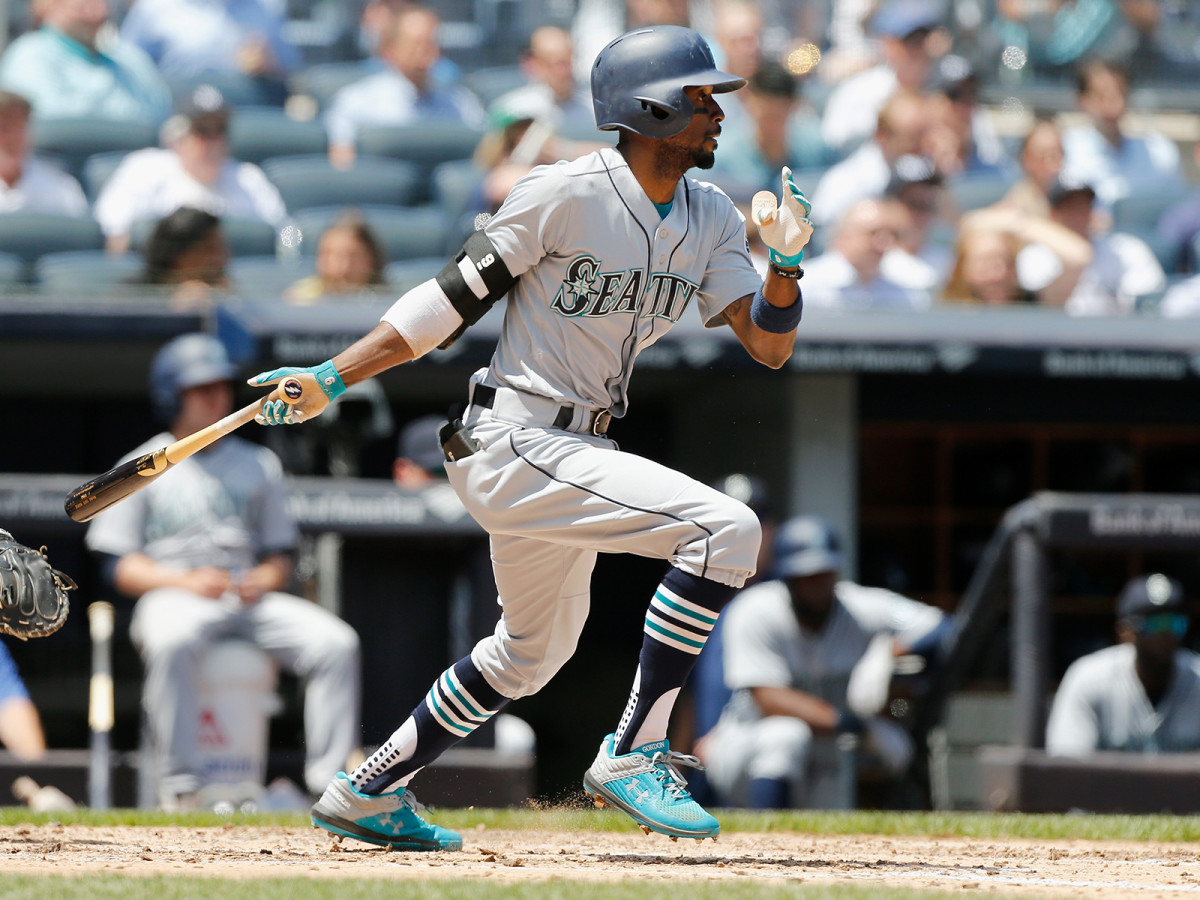
3. Statcast calls sprint speed its “foot speed metric, defined as feet per second in a player’s fastest one-second window.” In Statcast’s first three years, a catcher was the slowest position player in the league. This year, a new position may suffer this ignominy. At 22.4 feet per second, Albert Pujols is the slowest player in the majors. The slowest catcher this year is Brian McCann, whose foot speed is measured at 22.6 feet per second.
4. For the first time in Statcast’s brief history, the league’s actual slugging percentage is far short of its expected slugging percentage. Statcast says its “expected outcome stats help to remove defense and ballpark from the equation to express the skill shown at the moment of batted ball contact.” In 2015 through 2017, the league outslugged expectation by at least 11 points. This year, its .406 slugging percentage is 27 points shy of its .433 expected slugging percentage.
5. Gregory Polanco certainly has a flair for the dramatic in the outfield. He has three catches this season that Statcast graded as having a catch probability of 25% or less, which it grades as five-star plays. At the same time, his Outs Above Average, which “is the cumulative effect of all individual catch probability plays.” Is -1. Since Statcast introduced catch probability in 2016, no player has had four or more five-star plays while also have a negative outs above average.
MICHAEL BRANTLEY IS A UNICORN AMONG HITTERS IN 2018
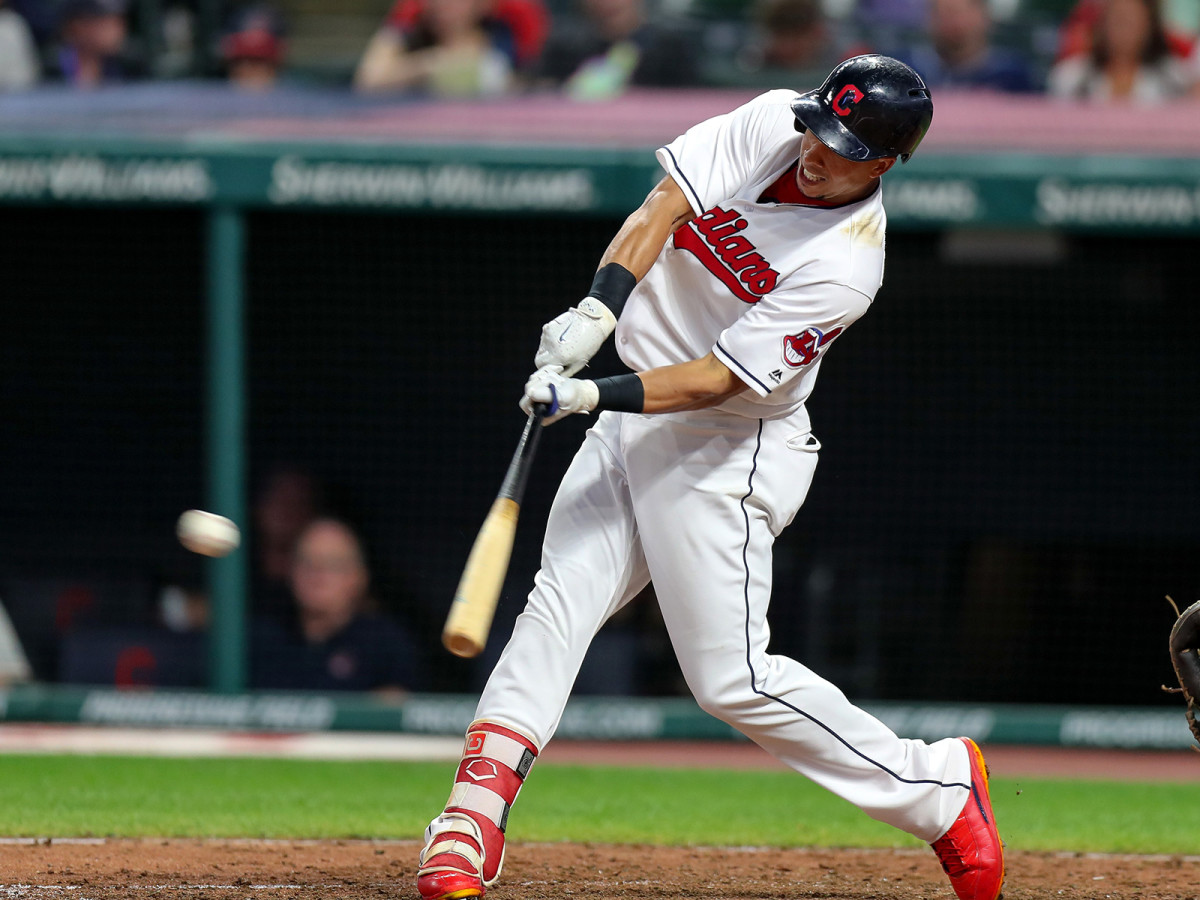
By Emma Bacciellieri
The Indians’ decision to pick up Michael Brantley’s $11.5 million option for this season seemed like a gamble six months ago. After struggling through two injury-plagued seasons, the outfielder had just undergone yet another surgery, an ankle procedure that would ultimately cause him to miss much of spring training and begin the year on the disabled list. But so far, Brantley has ensured that Cleveland’s gamble has paid off.
He’s been healthy ever since he made his return in early April, and beyond that, he’s been good. While he hasn’t returned to the heights of his career-best season in 2014, he’s still sporting a strong slash line of .306/.355/.493 with 11 home runs. Brantley has easily been the team’s best offensive contributor outside the brilliant infield tandem of Jose Ramirez and Francisco Lindor.
Midseason Report Card: The Diamondbacks and Dodgers Will Fight for the NL West Crown
Apart from Brantley’s extensive injury history, however, there’s something else that makes this success interesting. Throughout his struggles, he’s retained the same general offensive profile—a high-contact, low-strikeout guy who hits for average. That profile, of course, has become increasingly rare in recent years.
Brantley currently leads baseball in contact rate, as well as in contact rate for balls in the strike zone. He’s one of only three qualified hitters with a single-digit strikeout percentage. None of this is unusual for him; all of his numbers in these categories are somewhere around his pre-injury career averages. But the ground in baseball has shifted so quickly here that what made Brantley a moderate outlier in his 2010 rookie season makes him a unicorn in 2018. Take a look at the league average numbers, alongside Brantley’s present stats:
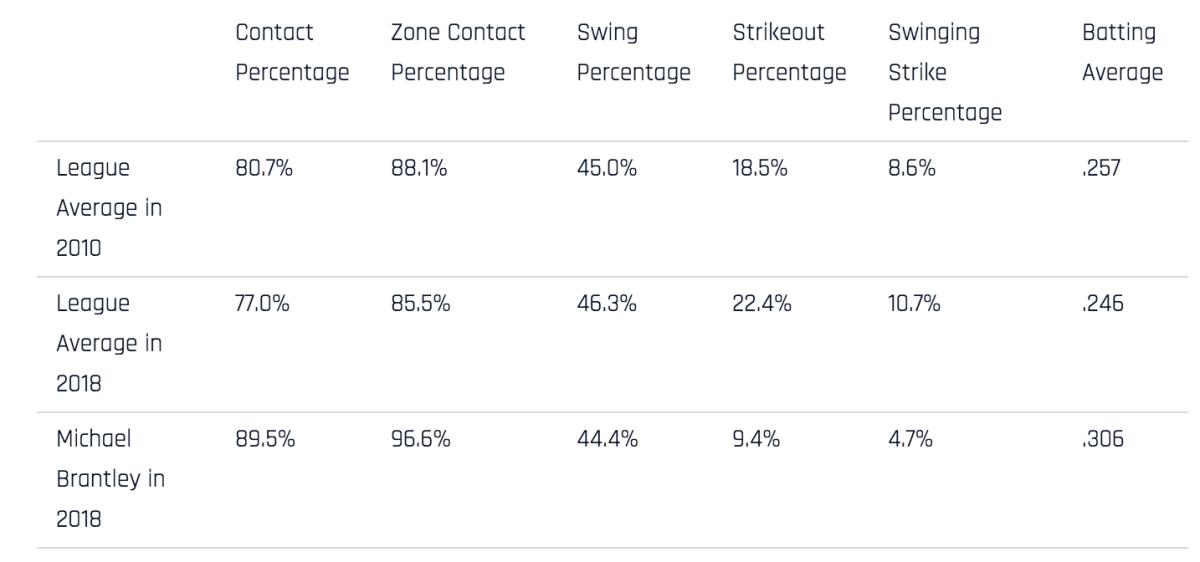
Brantley’s skill set is an anomaly in today’s game, and becoming more so all the time. So far this season, though, he’s been making it work for him.
WHAT'S ON TAP: A PAIR OF SURPISING DIVISION LEADERS CLASH IN MILWAUKEE
By Michael Beller
Hitter to Watch: Max Muncy
One month ago, Muncy was starting about two out of every three games for the Dodgers, hitting for some power but not doing much else. At the start of July, he has made himself into arguably the most important player on the team this season. He finished June hitting .289/.465/.711 with 10 homers and 16 RBI in the month. After faltering for the first two months of the year, the Dodgers are in the thick of the NL West race. They wouldn’t be there without Muncy.
Pitcher to Watch: Chris Sale
Sale made two starts last week, taking the ball against the Mariners and Yankees, two teams that already seem near-locks for the postseason. Sale first dominated the Mariners, striking out 13 in seven shutout innings. He then nearly repeated the exact same fate at Yankee Stadium, keeping one of the best offenses in baseball scoreless for seven innings while fanning 11. Sale’s next start is scheduled for Friday against the Royals.
Series to Watch: Braves at Brewers, Thursday through Sunday
The Braves and Brewers open this week as the leaders in the NL East and Central, respectively, owners of the two best records in the senior circuit. Back at the start of the season, that would’ve seemed unlikely for the first full week of May, let alone the first full week of July. Assuming the teams stay on schedule, the Braves will send Max Fried, Mike Foltynewicz, Anibal Sanchez and Sean Newcomb to the mound. The Brewers will counter with Jhoulys Chacin, Freddy Peralta, Brent Suter and Junior Guerra.
TWEETS OF THE WEEK
— Seattle Mariners (@Mariners) July 2, 2018
ARE YOU KIDDING ME, KEVIN PILLAR?!
— Sportsnet (@Sportsnet) July 1, 2018
😱 pic.twitter.com/GOSUgvMxv6
June is over.
— Céspedes Family BBQ (@CespedesBBQ) July 1, 2018
The Orioles finish the month with 0 wins against American League teams. Zero!
The Orioles last win against an AL team was May 25th.
The Orioles are probably not going to make the Postseason.
Someone taped two of Yasiel Puig’s nearly naked photos in ESPN The Magazine to a Dodger Stadium dugout wall. “Ya’ll see our new wallpaper?” Matt Kemp asked.
— Pedro Moura (@pedromoura) June 26, 2018
This is probably the lowest point in Jeter’s career https://t.co/QFKhVWaZl6
— Jorge Castillo (@jorgecastillo) June 26, 2018
FROM THE VAULT: MICHAEL JORDAN, THE WHITE SOX AND BAGGING IT
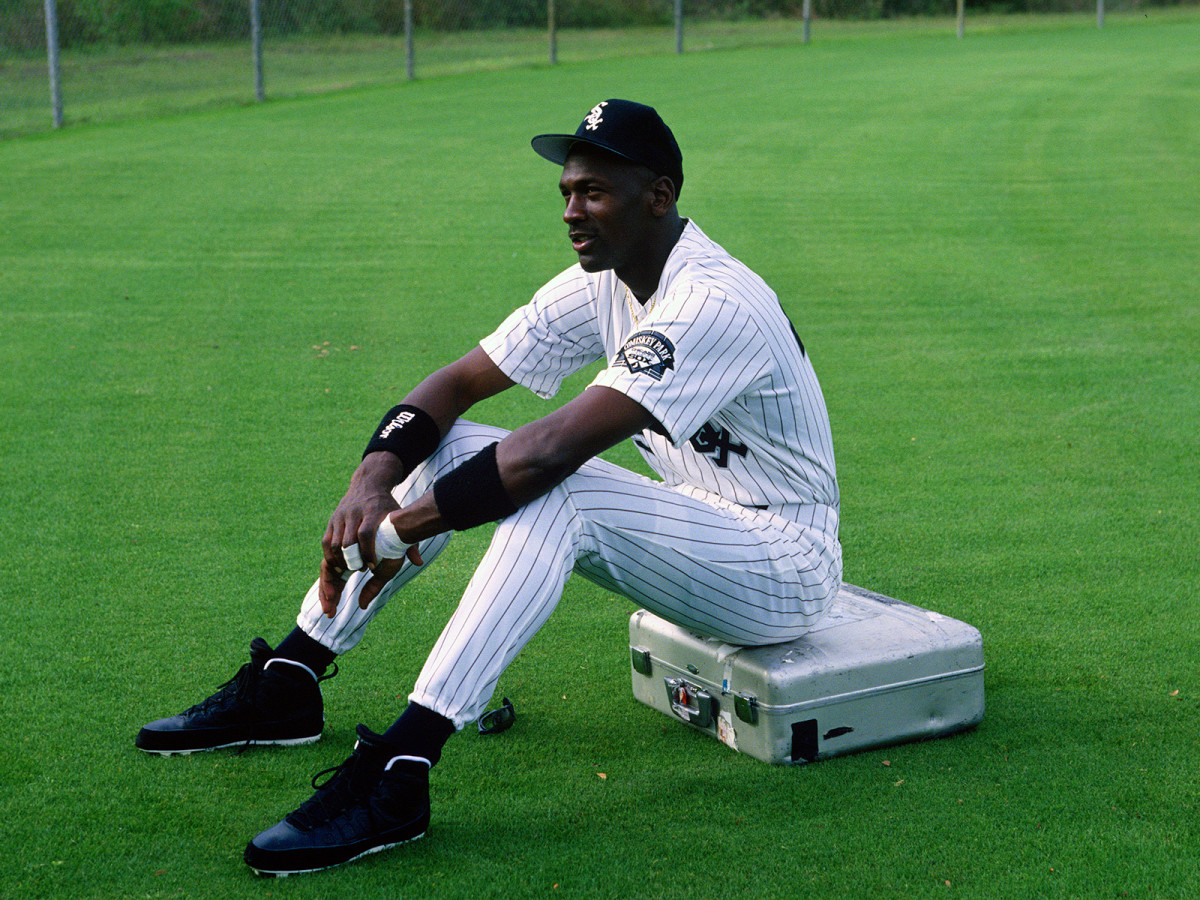
By Connor Grossman
Surprise! LeBron James is a Laker. Among the predictions where free agency might take him, baseball certainly wasn't an option (so we think). But it didn't appear that way either when Michael Jordan stepped away from basketball. We know how poorly Jordan's baseball story goes, but it's worth revisiting in the wake of this NBA shakeup. From the first line of Steve Wulf's 1994 spring training piece—paired with the memorable "Bag It, Michael" cover—he shreds Jordan's pivot to Major League Baseball. Hall of Famer George Brett is quoted as saying, "...players don't want to see him make it, because it will be a slap in the face to them."
However questionable LeBron's decision may be, at least he's still playing basketball.
Find the full Jordan story here and enjoy the excerpt below.
Perhaps because of Michael's charm—and certainly not his swing—the Chicago players are fully cooperating in this charade. "He needs time, but I've already seen definite improvement," said American League MVP Frank Thomas late last week. "He can fly, and lots of teams carry speed guys. I want a player on my team who's not afraid of the big game, who loves the pressure, and that's Michael. He's blessed."
While the White Sox try to rationalize Jordan's audition, baseball's other uniformed personnel are almost irrational about it. "He had better tie his Air Jordans real tight if I pitch to him," said Seattle Mariner fireballer Randy Johnson. "I'd like to see how much air time he'd get on one of my inside pitches."
